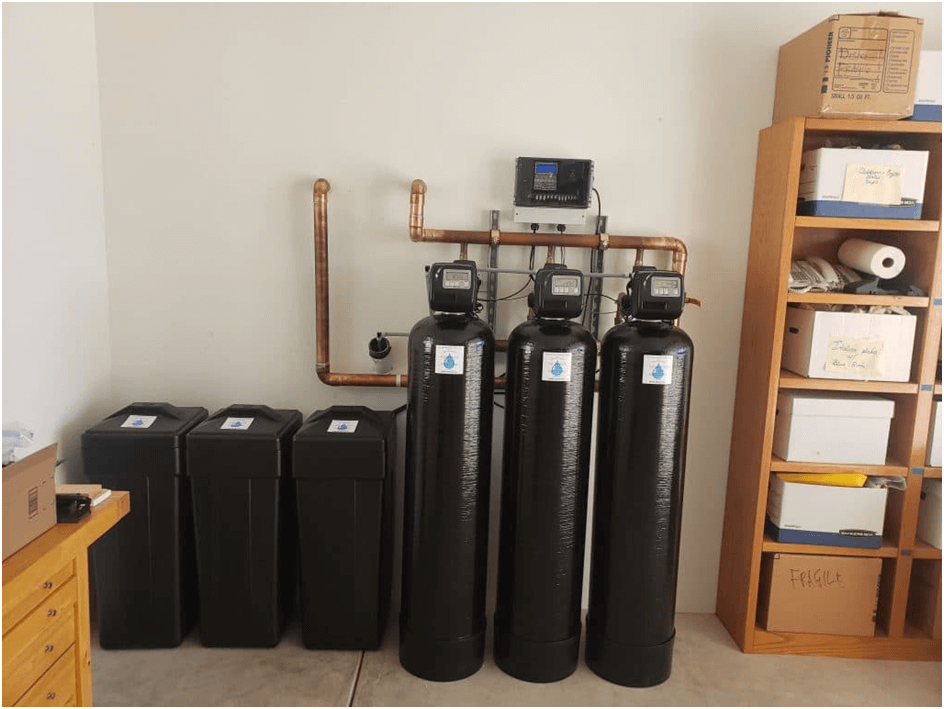Water softeners used for domestic purposes are devices designed to reduce the hardness of water, which is primarily caused by high levels of calcium and magnesium ions. Hard water can lead to scale buildup in plumbing and appliances, reduce soap effectiveness and cause other issues. Here’s a description of the common types and components of domestic water softeners that we deal in :
Types of Domestic Water Softeners
Ion Exchange Water Softeners
These are the most common type of water softeners. They use a resin bed that exchanges calcium and magnesium ions in the water with sodium or potassium ions. As hard water passes through the resin bed, the calcium and magnesium ions are captured and sodium or potassium ions are released into the water.
Resin Tank: Contains the ion exchange resin beads.
Brine Tank: Holds a salt solution used to regenerate the resin.
Multiport Control Valve: Manages the flow of water through the system and controls the regeneration cycle.


Dual-Tank Water Softeners
These systems have two resin tanks, allowing one tank to be in use while the other regenerates. This ensures a continuous supply of softened water without interruptions.
Two Resin Tank: Alternately used for softening and regeneration.
Multiport Control Valve: Manages the switching between tanks and regeneration cycles.
Key Components of Domestic Water Softeners
Function: Contains ion exchange resin beads that remove hardness ions from the water.
Function: Stores salt or potassium pellets used to regenerate the resin beads. It is typically connected to the resin tank.
Function: Regulates the flow of water through the system, initiates the regeneration process and monitors the system's operation.
Function: Allows water to bypass the softener system when needed, such as during maintenance or repair.
Function: Removes sediment and debris from the water before it reaches the softener, extending the life of the resin and improving performance.
Benefits of Domestic Water Softeners
Prevents Scale Buildup:
Reduces the risk of scale accumulating in pipes, appliances and fixtures.
Improves Soap Efficiency:
Enhances the effectiveness of soap and detergents, leading to cleaner dishes, clothes and skin.
Extends Appliance Life:
Helps prevent damage to appliances such as water heaters and washing machines.
Reduces Water Staining:
Minimizes stains on sinks, tubs and laundry caused by hard water.

Maintenance and Considerations
Regularly refill the brine tank with salt or potassium pellets.
The resin beads may need replacement every 10-15 years, depending on usage and water quality.
Ensure the control valve is properly programmed to handle regeneration cycles based on water usage.